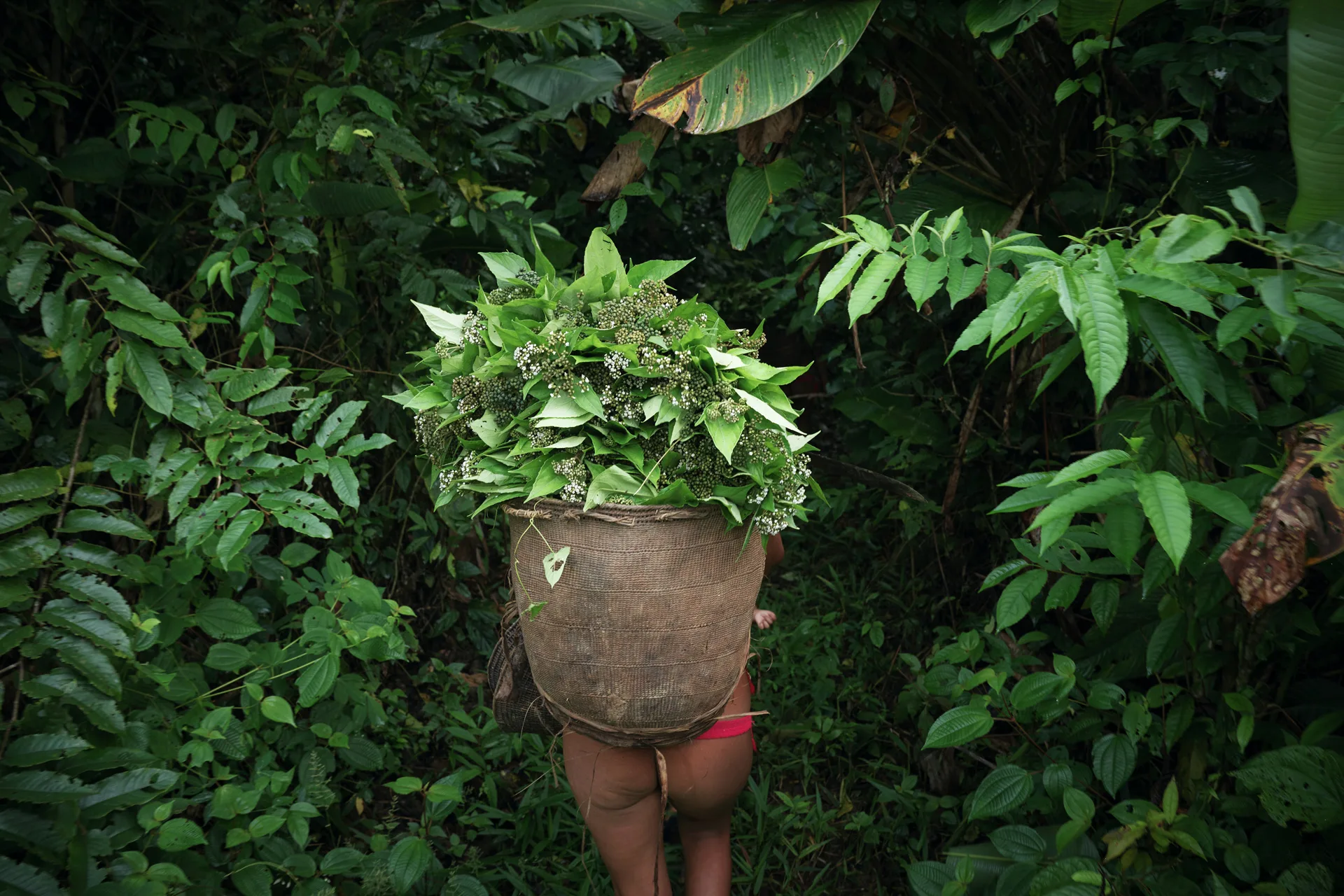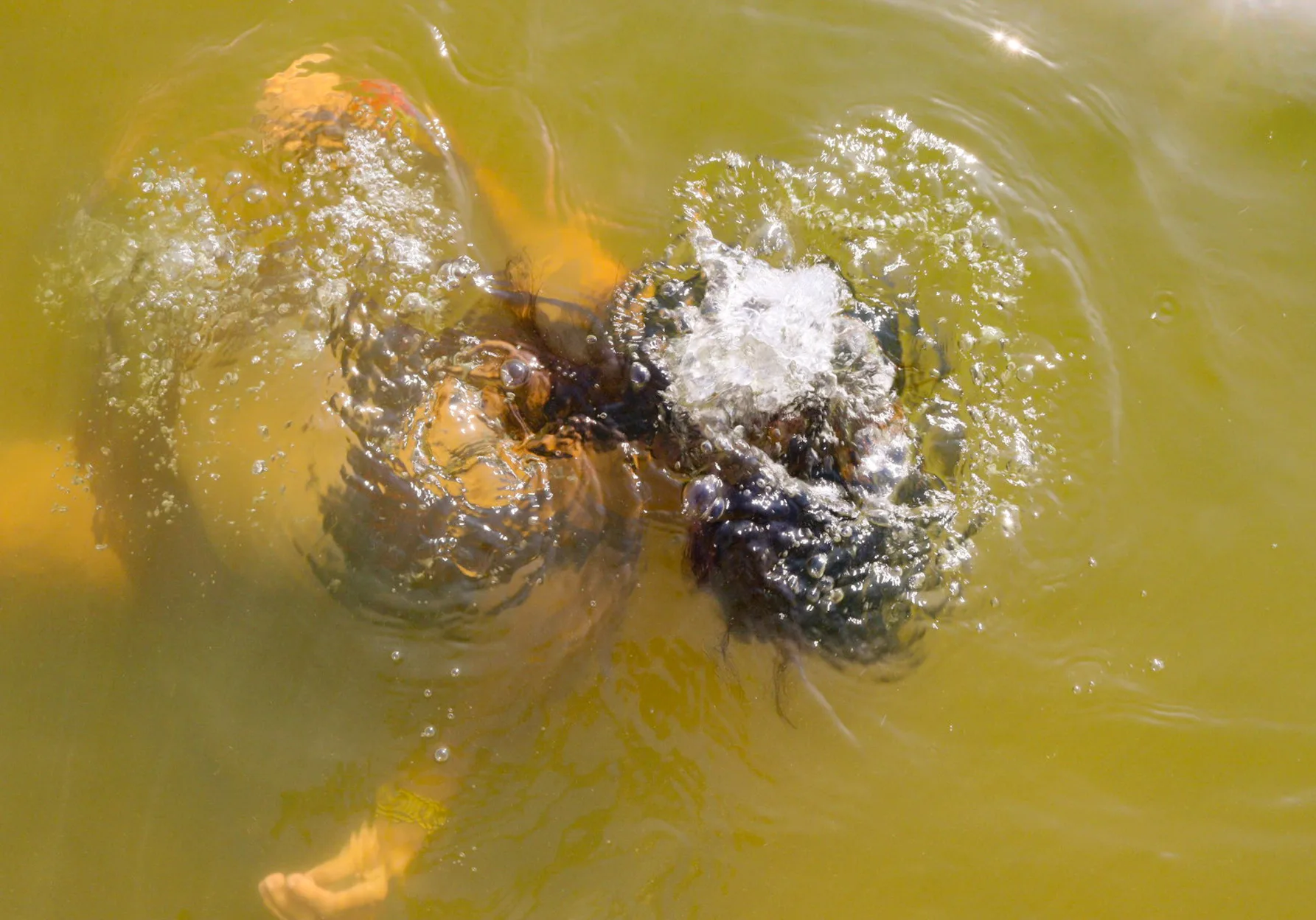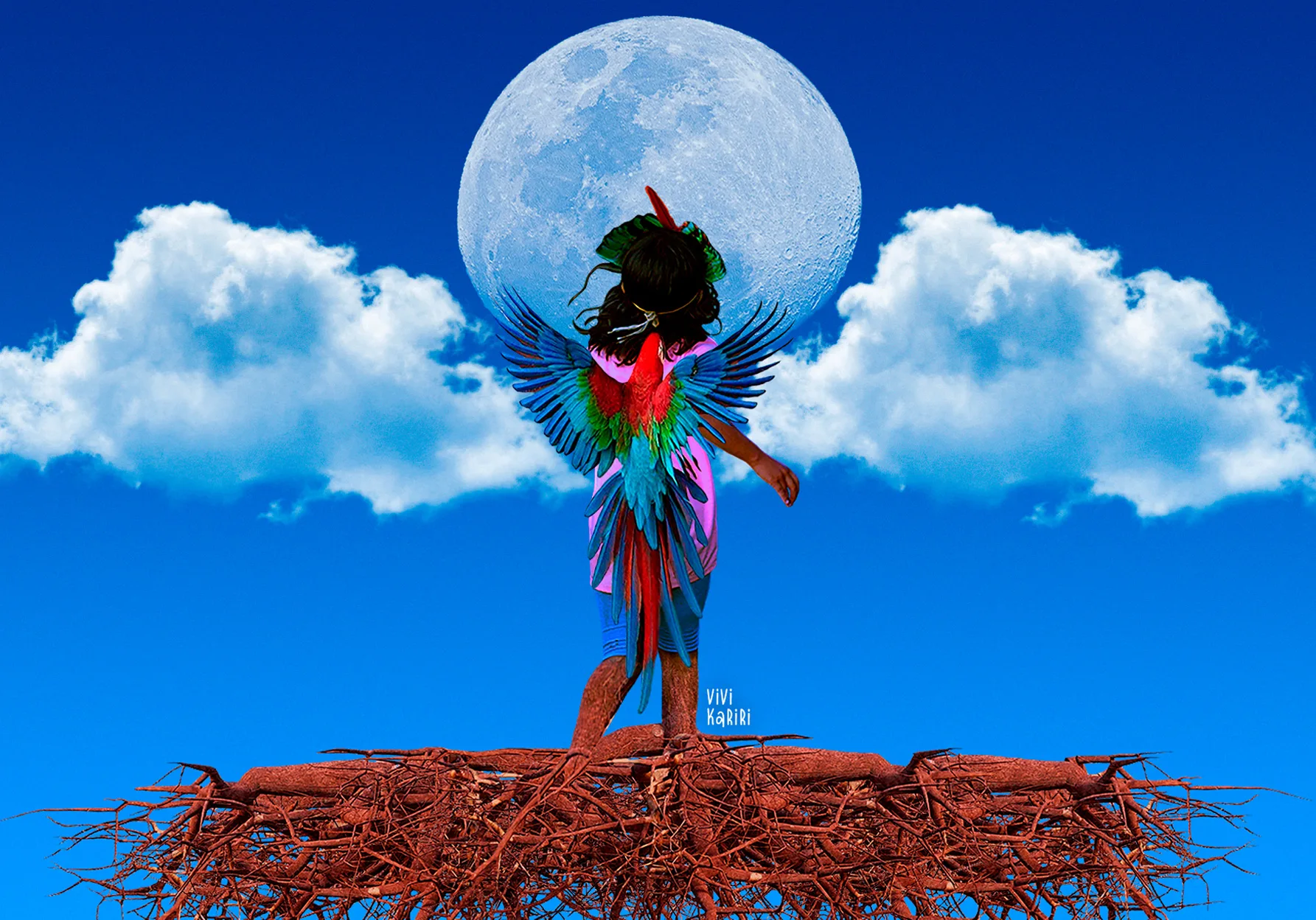Do you too feel that time is passing faster and faster? I mean, do you too notice that there are more events happening in a unit of time? Maybe it’s a direct result of more human beings on the planet? Each acting and interacting, some in relation to others and to everything we now call… Nature?
Yet if each tree in the forest lacks an understanding of borders, each part and parcel of a vast and profound network of roots, rhizomes, mycorrhizae and other microscopic, living, organic entities… where did this absurd idea of a line drawn between ALL forms of life and non-life come from after all? That we are not ourselves the very Earth, but are rather just separate and isolated beings, self-propelling over it? Where did this half-baked idea that we are AGAINST Nature come from?
We are Nature. The guardians of this ancestral truth, as ancient as Life’s origins, nearly 3.7 billion years old, are the original peoples of each continent, like the Amazon’s Indigenous people, who hold up the sky itself, albeit shakily. The apocalypse has many weapons at its disposal: fire, poison, lies, violence, and death. Bombarded by the white man’s incessant war on the Earth, the sky is collapsing into drought, fire, rain, and flooding. It is telling Manaus, burning Ribeirão Preto, grieving Porto Alegre.
Nevertheless, moving through Brazil’s Federal Supreme Court, against the tide of evidence on the environmental crisis, is an embarrassing attempt to reconcile the Indigenous peoples’ territorial rights with the predatory interests of the large landowners, land-grabbers, and miners responsible for the recent passage of Law 14.701/2023, which stipulates that the demarcation of all Indigenous territories will be done using the cut-off date of October 5, 1988 for all lands occupied or disputed by Indigenous peoples. The truth is being told once and for all: whoever gets there first takes adverse possession. As Paulo Nazareth points out in his piece Marco Temporal (the Portuguese term for this concept), currently on display at Inhotim, the only possible historic cut-off point is 1492, the year when the Trans-Atlantic invasion began. May those who arrived after find a way to honor the original peoples: either acceptance or respect.
And we must talk about the reparations owed. Less than 100 years after Columbus landed on the island of Hispaniola, no Taíno Indigenous peoples remained living in the Caribbean, due to massacres, epidemics, and brutal slavery. There was similar devastation, sooner or later, everywhere in the Americas. One report from 1637 says the Omágua-Kambeba people inhabited over 400 villages just between the Javarí and Jutaí Rivers, yet today there are fewer than 1,000 members between Brazil and Peru. Driven from their land after the Paraguayan War, the Guarani-Kaiowá now reside along the highways of Mato Grosso do Sul, or else they are martyred by farmers and hired guns while trying to return to the sacred lands of their grandparents. Just three examples of an Indigenous holocaust repeated everywhere and without end.
An essential part of the strategy of colonial domination was – and still is – defending at all costs the idea that the Indigenous peoples are socially primitive, which would explain how easily they were dominated. Since the Valladolid Debate in 1550–1551, the oppressors had spread an idea of the Indigenous people as subdue-able, unimputable and teachable, as they almost entirely lacked science, cities, writing, apparel, and even souls.
In the twentieth century, this position took on an archeological bent when arrowheads were found at the Clovis site, in the US state of New Mexico. Dating back to around 13,000 years ago, these artifacts were then presented as conclusive evidence that human migration had only begun in the Americas near the end of the last ice age. All of the Amerindian peoples would therefore be recent migrants, new to the continent and with little time to evolve culturally compared to the Afroeurasian peoples, which would at least partly explain their supposed simplicity.
However, it happens that many other archeological discoveries – in Chile, Brazil, and even the United States – have found older dates for the arrival of the first human populations in the Americas. There is currently consensus that the first migrations likely occurred between 15,000 to 20,000 years ago, and maybe even far before this.
Genetic, archeological, and anthropological studies have shown immense networks of material and immaterial exchange in the Amazonian-Andean-Mesoamerican cultural complex. Over time, the forest’s Indigenous occupants produced huge swaths of orchards on black land, extremely rich in nutrients derived from this same human presence. Amerindian migrations reached western Polynesia, massive cities were built in the middle of the forest, astronomical observatories were built from close to the mouth of the Amazon River up to Mexico’s Yucatán Peninsula. Extremely sophisticated art and complex systems of writing and mathematics were invented and perfected over the millenia. There was surely abundant time to think and experiment.
No, the peoples the Europeans slaughtered were not at all primitive. Denying scientific status to Indigenous knowledge means pretending that only knowledge from a university deserves to be distinguished as “science,” the supposed sole standard of universal truth. This racist nonsense ignores knowledge not just produced and accumulated over millennia, but conveyed almost always for free to universities, institutes, and corporations in Europe and the USA.
The Amazonian-Andean-Mesoamerican cultural complex gave the world the cocoa that delights taste buds everywhere, as well as the potato and açaí, capable of quenching any caboclo’s thirst. Rubber in particular, with its thousand and one uses, came from the Amazon, as did the quinine used to treat malaria and the ayahuasca used to relieve depression. None of these wonders was a mere gift of nature found by happenstance by primitive peoples. To the contrary, they all represent bold innovations by the original peoples, patiently and diligently developed with great astuteness and wisdom. Ancient innovations monetized, alienated, and appropriated in recent centuries by the white man, nearly always unilaterally and without sharing any benefits.
Actually, as more research is done and a principle of epistemological justice is now emerging on the horizon, it is starting to become evident that Amerindian contributions to the planet’s culture go way beyond products and processes, reaching fundamental concepts in philosophy, economics, and political science. For instance, the modern idea of freedom, usually attributed to Enlightenment philosopher Jean-Jacques Rousseau, was probably first articulated in the salons of Europe through the words of Indigenous diplomat Kondiaronk, of the Wendat nation, between the late seventeenth and early eighteenth centuries, and it would have had a decisive influence on the French writer.
In his blunt critique of European society, Kondiaronk identified money as the main force driving social corruption, 300 years before experimental psychology showed that money is emotionally and morally toxic. Kondiaronk left us a clear report of this society that loves money, made up of the “commodities people” that shaman Davi Kopenawa Yanomami tells us about. A people who want everything now and who voraciously and incessantly desire objects and experiences, without considering consequences. A capitalist people, recent arrivals to the human journey, but increasingly dominant and inhumane. A people barren of feelings, who recognize only the commercial value of things, a blunt and unfriendly people who no longer recognize a soul in anything, even when they may seek encounters with the spiritual world.
In the commodities people’s society, exchanges are more and more frenetic, a feeling of satiety is more and more ephemeral, the accumulation of resources is more and more unfair, and socioenvironmental destruction is faster and faster. The implicit rule of the game is that whoever accumulates more is more in charge. And so, in the maniacal dynamic of inconsequential wagers on the poker tables of the globe’s financiers, the apocalypse of this sad people continues to unfold.
Nevertheless, contrary to what Rousseau imagined, freedom is not a primitive attribute of human beings, an initial naïveté that was naturally and inexorably eliminated by the same unfolding of the historical process. Freedom is, in fact, a result of the conscientious and collective exercise of the simple idea that a disparity in material goods can never produce a disparity in political power. Something that is increasingly harder to imagine in a capitalist society, but that is still practiced daily by thousands of original societies who continue to live according to their ways.
Indigenous knowledge runs deep and heeding its warnings could still end up saving us. If you are a justice on Brazil’s Federal Supreme Court and you are reading these words, please pay attention: preservation of the Amazon and other biomes desperately requires the demarcation of Indigenous territories. To this day, only demarcated Indigenous territories have truly been able to resist the voraciousness of deforestation.
Action is needed now to contain a capitalist metastasis in the world’s largest rainforest. Only the forest peoples can regenerate it. Hastening brings good fortune. Do you notice time is passing faster and faster? We are nature. The guardians of this original truth are the ancestral peoples. Notice their signs.

Indigenous knowledge runs deep and heeding its warnings may still end up saving us. Photo: Pablo Albarenga/SUMAÚMA
Sidarta Ribeiro is a father, capoeira practitioner, and biologist. He holds a PhD in Animal Behavior from Rockefeller University and a Post-Doc in Neurophysiology from Duke University. A researcher with the Strategic Studies Center at the Oswaldo Cruz Foudation (Fiocruz), and a cofounder and educator at the Brain Institute at the Universidade Federal do Rio Grande do Norte, he has authored five books, including O Oráculo da Noite and Sonho Manifesto (Cia das Letras). For SUMAÚMA, he writes the column Thought Seeding.
Fact-checker: Plínio Lopes
Photo editor: Lela Beltrão
Proofreader (Portuguese): Valquíria Della Pozza
Spanish translation: Julieta Sueldo Boedo
English translation: Sarah J. Johnson
Layout and finishing: Natália Chagas
Editorial workflow: Viviane Zandonadi
Editor-in-chief: Talita Bedinelli
Director: Eliane Brum






